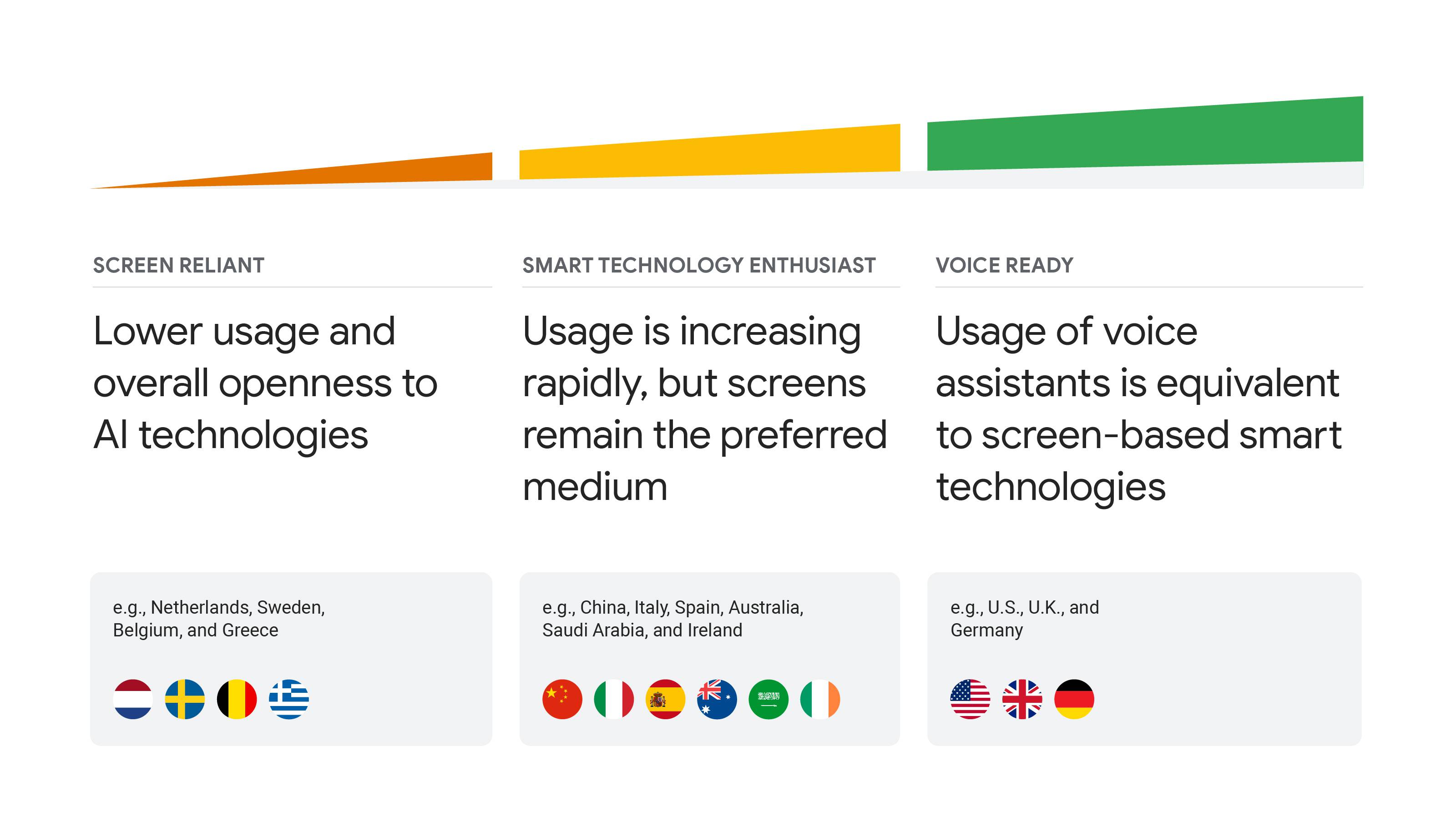Artificial intelligence is being embraced by consumers, and it is opening up opportunities for brands. Senior thought leaders from media agency OMD examine the data and offer practical advice on how to best approach these new technologies.
The next wave of disruption is here. A whole host of technologies built around artificial intelligence, including voice assistants, computer vision and autonomous agents, are becoming mainstream. And that’s opening up opportunities for brands, but it’s also changing the way we do business.
As marketers, we need to better understand the effect on people’s behaviour today and in the future. And as product specialists and thought leaders at OMD, it’s our job to consider what these burgeoning trends mean for our clients. To find out, we undertook a global research initiative to explore how people accept, understand and trust AI in their daily lives, and what that means for how people shop for goods and services. Through multiple research phases, including quantitative and qualitative methods over two years, we surveyed more than 30,000 respondents across 13 global markets, 21 shopping categories and 65 future retail scenarios.
3 levels of readiness

Know your audience and understand adoption barriers
In our most recent round of research, 76% of respondents say they use some form of AI weekly and 61% say they own a smart device.1 While this would seem to indicate these technologies are now mainstream, we see significant differences across countries in terms of adoption. We’ve identified three distinct markets:
- Voice-ready markets where the usage of voice assistants is equivalent to screen-based smart technologies, indicating that voice is quickly becoming mainstream. Countries include the US, the UK and Germany.
- Smart-technology-enthusiast markets where voice adoption and usage are increasing rapidly, but screens remain the preferred medium due to the less-established voice ecosystems available. Countries include China, Italy, Spain, Australia, Saudi Arabia and Ireland.
- Screen-reliant markets that have lower usage and overall openness to AI technologies, primarily due to language complexities or market size. Countries include the Netherlands, Sweden, Belgium and Greece.
This means brands must consider the activation types and communication strategies across different markets.
Before rushing into voice or other AI activations, brands should first make sure consumers are open to using the technology and then build trust with positive experience. Next they should be transparent about what data is being used and how it’s being used.
Build trust step by step
Even as people adopt advanced technology, they are increasingly worried about how much data is being collected and how it’s being stored, anonymised and used. And they believe brands should be taking responsibility for addressing their privacy and security concerns.2 As a result, people’s trust in AI is fragile and must be carefully cultivated by brands.
Marketers must ensure they are creating experiences that people and technology are ready for.
It turns out that ongoing positive experiences are overcoming people’s fears around new technologies. As much as marketers would love to push the boundaries of what’s possible, people are comfortable – even delighted – with the simple interactions that smart technologies unlock, from controlling music to ordering from McDonald’s using their voice.
These functional interactions are how habits and trust are formed. Marketers must ensure they are creating experiences that people and technology are ready for.
Commit to transparency
As usage increases and technology improves, people’s expectations rise above basic functionality. So while people want more relevant and engaging interactions, it’s in conflict with their current levels of trust. There is an opportunity for brands who clearly illustrate how the consumer’s data is being used to drive new services.
Brands need to map out how they can create experiences that are within people’s comfort zones. Consider that 55% of consumers are open to booking a test drive by taking a picture of a car they like. It’s not hard to understand why. The car shopping experience can be a long and overwhelming one. Something like this would add convenience and reduce friction. And there’s a clear connection between the data gathered (the photo of the car, distance from nearest dealers) and the benefit to the consumer (removing steps to book a test drive). A clear commitment to transparency will enable marketers to explore new models that unlock data and development opportunities.
Brands must design for everyday experiences and constantly improve.
Brands must design for everyday experiences and constantly improve, so people are aware that value is always being added.
Experiences should be scaled over time to provide both value for the consumer and unlock valuable information for the brand. This creates a positive feedback loop in which more valued experiences build more valuable data sets, which in turn drive investment in crafting more valued experiences. A significant role for advertising exists to accelerate this feedback loop, both normalising these experiences and expanding perceptions of what is possible. We can expect to see TV and online video ads showcasing skills and apps, positioning their use in everyday life, especially around contextually relevant content.
The ongoing pursuit of understanding consumer behaviour and attitudes will enable us to create more valued and valuable experiences to leverage the most disruptive communications technology trend of the 2020s.








